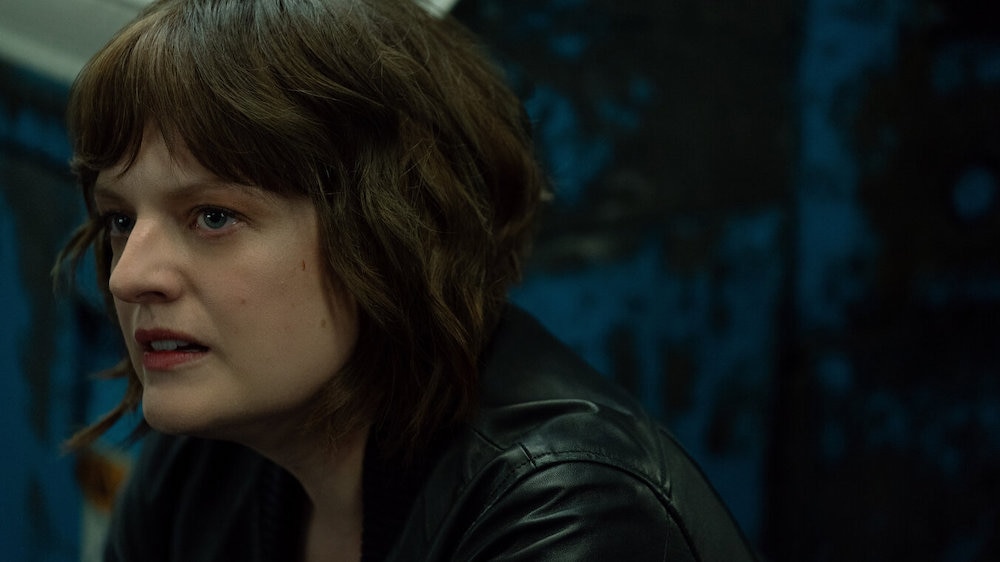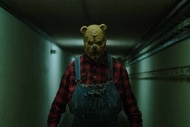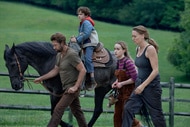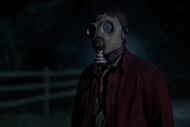Create a free profile to get unlimited access to exclusive videos, sweepstakes, and more!
'Shining Girls' star Elisabeth Moss and EP Silka Luisa explain the big finale
Actress Elisabeth Moss and Shining Girls showrunner Silka Luisa unpack the big season finale episode, "30."

One of the under the radar TV gems of the late spring has been the Apple TV+ adaptation of novelist Lauren Beukes's sci-fi, multiverse thriller, Shining Girls. Elisabeth Moss stars (and also executive produced and directed two episodes) as Kirby Mazrachi, a Chicago woman who is assaulted and left for dead. She survives but the residual trauma includes the bizarre side effect of her reality suddenly shifting, which changes the details of her every day life including everything from her job, where she lives and her relationships with her mother and close friends. Six years later, she discovers another woman has been attacked and killed in a similar way, a revelation that cracks open the truth about her attacker, a serial killer who can traverse time.
With its multiverse storytelling, Shining Girls fits right into 2022's big trend, as seen in Everything Everywhere All at Once and Doctor Strange in the Multiverse of Madness. But, Shining Girls also pulls off the rare feat of being an adaptation with major changes that are as satisfying as the source material. Showrunner and executive producer Silka Luisa remixed the point of view of the series to focus just on Kirby's experience, which makes her quest to find her attacker, Harper (Jamie Bell) more pointed and personal. And, it allows the series to cleverly use Moss' hair, clothing and physical being to delineate the time "shifts" happening randomly in her life.
Warning: The following contains spoilers for the series finale, as well as the book, Shining Girls.
In the Shining Girls season finale, "30," the series narrative makes the house, which is revealed to be the conduit of Harper's ability to jump through time, not an orchestrator of events as implied in the book, but a tool that can be discovered and possessed by anyone. When Kirby discovers that fact, she confronts Harper inside the home and becomes the new "owner" which is very much a double-edged sword for her. SYFY WIRE spoke with Luisa and Moss about the powerful finale, and that final scene which ends the series on a haunting note.
As to why Luisa decided to define the origin story of the house, and how it functions in the series, she explains, "My experience reading the book, and how I interpreted it, was almost like the house was tied to Harper and their psyches were melded into one entity. For me, it was really important to establish the house as an independent totem of power that anybody could have. Harper happens to have it at the beginning of the season. But somebody else could have it and do something else completely different with it, almost like a natural wonder. And the question is who's going to find it and what will they do with it?"
In "30," Kirby finds it and uses it to exact revenge on Harper in a very satisfying way. But it also ties her to the house, the place that is ultimately the source of her trauma and is now the place where she finally puts down Harper. It's a very dark, bittersweet outcome that ends on a very ambiguous look into the camera from Kirby that leaves much unsaid.
Moss tells SYFY WIRE that ending shot was a very powerful and important moment for her, Luisa and director Daina Reid to work out. "We always knew that was going to be the last scene," she shares. "For a long time, months and months and months, I knew that was how the show was going to end even before I saw the script. But that moment, we shot a lot of options. We weren't sure what we were going to need. Should it be hopeful? Should it be triumphant? Should it be scared? Should it be melancholy?"
She reveals they shot many "different takes with different performances" because they weren't exactly sure what they wanted it to be. "In the end, what won out for for all three of us was the idea that it didn't feel right if it was just triumphant," she says. "It didn't feel right if she was just like, "Yay, I won! I got the house!" That wasn't the story of trauma that we were telling. We wanted to make sure that what was coming across was the idea that she has gotten to a new place in her life. But that doesn't mean that everything's going to be okay. And what does she do now? Who is she now that she has to live in this house? And what is it going to be the person who has this house? I'm hoping that there is that bit of fear and bit of melancholy that you see at the end."
Luisa adds, "I think this experience cost her something. She's no longer the woman that she was before she met Harper. She's definitely confronted Harper, but at the same time, now that she's done that and she has this incredible power, what is she going to do with it? And at the end of the season, I don't think she has a clear answer."
Does that mean there could be more to Kirby's story, or the house which has existed throughout time? Luisa implies that the story is complete. "Because I was covering Lauren's book, I wanted to tell the whole story even though I did end the show differently, because at the end of the book she burns down the house," she details. "But at the same time, I remember reading that and feeling like there were still strands I didn't understand. There was still more terrain to explore, but I felt like I had experienced a complete story. In that sense, I wanted the season to mirror that reading experience where you felt like you really had seen an arc for Kirby. And her journey in confronting her trauma felt like we'd covered the full spectrum of it."
The full season of Shining Girls is available now on Apple TV+ .


























